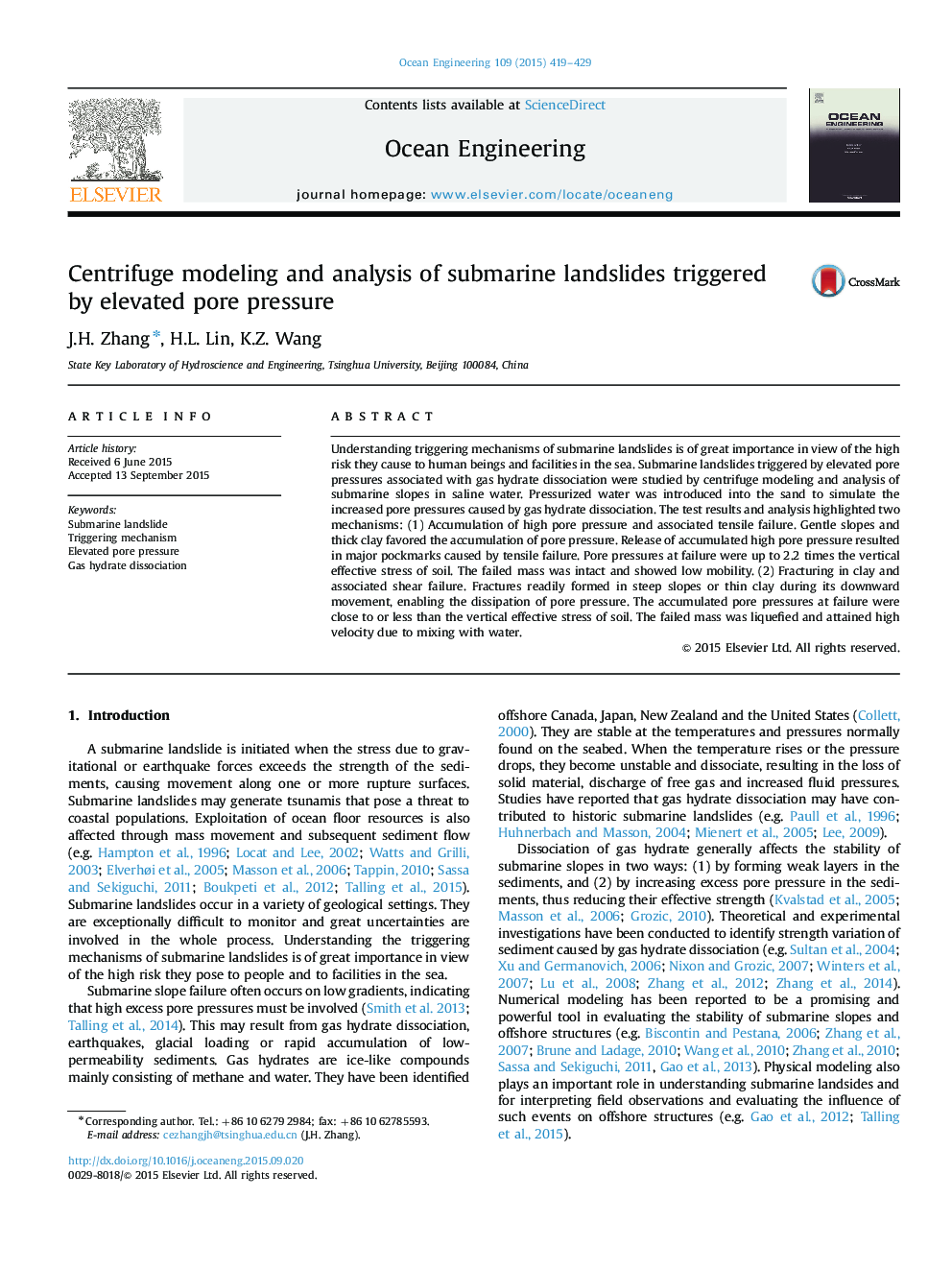| Article ID | Journal | Published Year | Pages | File Type |
|---|---|---|---|---|
| 8065233 | Ocean Engineering | 2015 | 11 Pages |
Abstract
Understanding triggering mechanisms of submarine landslides is of great importance in view of the high risk they cause to human beings and facilities in the sea. Submarine landslides triggered by elevated pore pressures associated with gas hydrate dissociation were studied by centrifuge modeling and analysis of submarine slopes in saline water. Pressurized water was introduced into the sand to simulate the increased pore pressures caused by gas hydrate dissociation. The test results and analysis highlighted two mechanisms: (1) Accumulation of high pore pressure and associated tensile failure. Gentle slopes and thick clay favored the accumulation of pore pressure. Release of accumulated high pore pressure resulted in major pockmarks caused by tensile failure. Pore pressures at failure were up to 2.2 times the vertical effective stress of soil. The failed mass was intact and showed low mobility. (2) Fracturing in clay and associated shear failure. Fractures readily formed in steep slopes or thin clay during its downward movement, enabling the dissipation of pore pressure. The accumulated pore pressures at failure were close to or less than the vertical effective stress of soil. The failed mass was liquefied and attained high velocity due to mixing with water.
Related Topics
Physical Sciences and Engineering
Engineering
Ocean Engineering
Authors
J.H. Zhang, H.L. Lin, K.Z. Wang,
